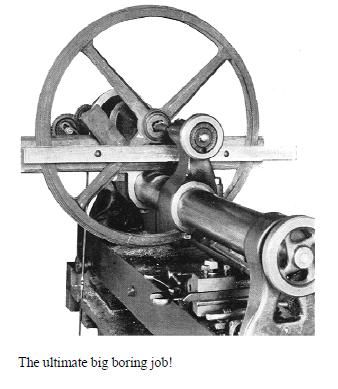Well here in faraway NZ I am still waiting to see the pictures to find out what the fuss is about. I did think that the original post read very much like a windup…I was surprised that it was not signed “Mother of three” or some such.
Not that I want to condone bad practices either, but hey, these articles are generally written by amateurs, working with limited equipment, and often with limited experience and limited photographic skills too. It is pretty certain that from time to time one of us is going to do something a way that seems OK, and someone else is going to know, possible from bitter experience or even the school of hard knocks that this is not the way to do it. “A soft answer turneth away wrath” and gentle correction will get better results than ranting. The other thing is that as amateurs with limited machines, we sometimes have to do things in way that would not be acceptable in a production environment That can be OK, so long as you have figured out the risks and how to mitigate them. For example if there is a risk of the job coming out of the chuck or other fixture, the operator should make certain that s/he is not in the line of fire, and nobody else should be present. Turning crankshafts between centres, especially with clamped on offset pieces, is a job like this.
Speaking of which, a while back now Anthony Mount described turning on a delicate little crankshaft between centres with no support between the webs….It surprised me, and I wondered if I should comment, because one thing that crankshafts love to do is wrench themselves out from between the centres and hurl themselves at your forehead. Pretty well every lathe book…Sparey and so on… will tell you how to support the webs to reduce the chance of this happening. But even with the best of care there is still some risk.
I must have had the need to part off without centre support well ingrained into me, I find it difficult to use a parting tool to make grooves when I have the centre in. Something keeps saying “Don’t do that!!!” even though I know I am only going to go in a limited amount. (eg making ball handles.)
But often the really big risks are not so obvious…even when someone tells you, it does not seem as if a piece of shaft turning around and a loose sleeve could be such a big danger does it? Some things need to be demonstrated. Grinders are probably one of the biggest potential hazards in the workshop. It always gives me the willies when I see used wheels come up at club auction time.
On the double sided tape thing, I have just recently read the Quorn articles, and Professor Chaddock was roundly taken to task for this in an article that was also extremely critical of the whole design a month or so after the series finished. It does require care, but I beleive that the tape can give as much grip as a magnetic chuck.
regards
John
Chris Trice.






